The 7/7 London Bombings: A Comprehensive Analysis of Britain’s Deadliest Terrorist Attack
On July 7, 2005, four British-born Islamic extremists detonated bombs on London’s transport network during the morning rush hour, killing 52 innocent people and injuring over 770 others in what became the United Kingdom’s deadliest terrorist attack since the Lockerbie bombing. This comprehensive investigation examines every aspect of the attacks, from the meticulous planning by the perpetrators to the intelligence failures that allowed them to succeed, the conspiracy theories that emerged in their aftermath, and the ongoing threat such attacks pose to British society today.
The bombings represent a watershed moment in British counterterrorism, marking the first successful Islamic suicide attack on British soil and fundamentally challenging assumptions about homegrown radicalization. Twenty years later, as the UK continues to face an evolving terrorist threat landscape, the lessons learned from 7/7 remain critically relevant to understanding how ordinary citizens can be transformed into killers and whether such devastating attacks could happen again.
The Attacks: A Coordinated Strike on London’s Heart
Timeline of Terror
The 7/7 attacks began in the early hours of July 7, 2005, when four men left Leeds in a rented Nissan Micra, embarking on a journey that would end in mass murder. The meticulously planned operation unfolded with deadly precision across London’s transport network.
7_7_bombings_timeline.csv
Generated File
The attacks consisted of four coordinated bombings: three on London Underground trains within fifty seconds of each other at 08:50, and a fourth on a double-decker bus nearly an hour later. The timing was deliberate, targeting the morning rush hour when London’s transport system was at its most crowded, maximizing casualties and creating maximum psychological impact.
The Four Attack Sites
Aldgate Station (Circle Line): Shehzad Tanweer, 22, detonated his bomb on an eastbound Circle Line train between Liverpool Street and Aldgate stations. The explosion occurred in the second carriage, killing seven people and injuring 171. Forensic evidence indicated Tanweer was sitting with the rucksack bomb next to him on the floor.
Edgware Road Station (Circle Line): Mohammad Sidique Khan, 30, the group’s leader, targeted a westbound Circle Line train just outside Edgware Road station. His bomb killed six people and injured 163. Witnesses reported seeing Khan fiddling with his rucksack moments before the explosion.
Russell Square (Piccadilly Line): Germaine Lindsay, 19, caused the deadliest single incident, detonating his device on a southbound Piccadilly Line train between King’s Cross and Russell Square. The explosion in the crowded first carriage killed 26 people and injured over 340, making it the most lethal of the four attacks.
Tavistock Square (Bus No. 30): Hasib Hussain, 18, the youngest bomber, detonated his device on the upper deck of a double-decker bus at 09:47. The explosion killed 13 people and injured 110, tearing apart the bus in front of the British Medical Association headquarters.

The aftermath of the 7/7 bombing on the Stagecoach Route 30 bus at Tavistock Square
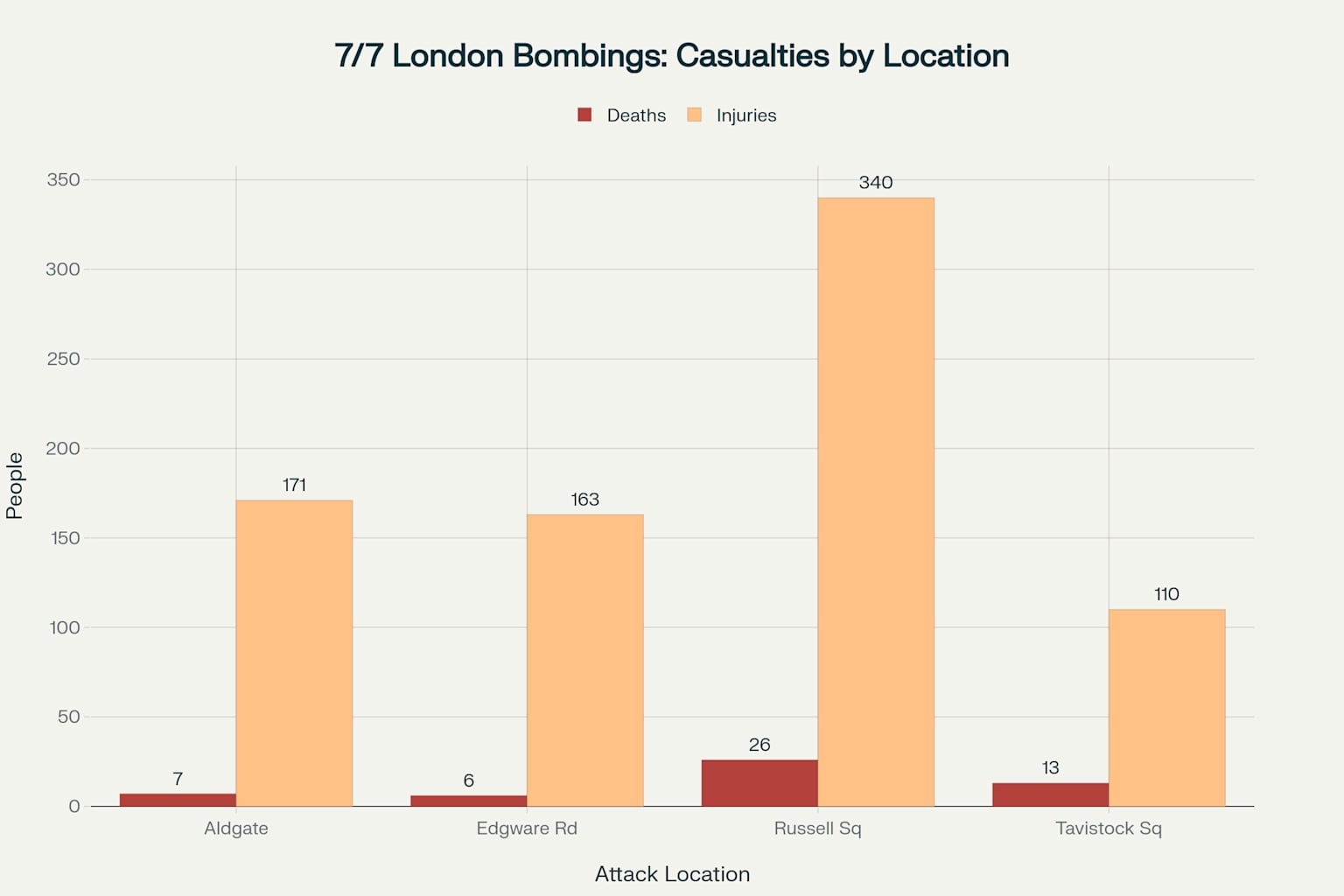
Comprehensive analysis of the 7/7 London bombings showing casualties, timeline, bomber profiles, and total impact
The Perpetrators: Ordinary Lives, Extraordinary Evil
Background Profiles
The four bombers were, in many respects, unremarkable young British men whose backgrounds offered few obvious warning signs of their capacity for mass murder. This ordinariness has made their transformation into killers one of the most disturbing aspects of the 7/7 attacks.
7_7_bomber_profiles.csv
Generated File
Mohammad Sidique Khan emerged as the clear ringleader, a 30-year-old father and husband who worked as a learning mentor at a primary school in Leeds. Colleagues remembered him as dedicated to helping troubled children, with many students regarding him as a father figure. His path to extremism was gradual, beginning during his university years and accelerating through his involvement in local Islamic groups in the Beeston area of Leeds.
Shehzad Tanweer was a 22-year-old sports science student from a prominent local business family. An accomplished athlete who excelled at cricket and athletics, Tanweer appeared well-integrated into British society. His radicalization began around age 16 when he became increasingly religious, eventually leaving university to focus on religious studies.
Germaine Lindsay, the outsider of the group, was born in Jamaica and moved to Britain as an infant. At 19, he was articulate and artistic, converting to Islam in 2000 alongside his mother. His radicalization was influenced by extremist preacher Abdullah al-Faisal, who was later imprisoned for incitement to murder and racial hatred.
Hasib Hussain, at just 18, was the youngest of the bombers. A quiet student with poor academic performance, he showed early signs of extremism, writing “Al Qaida No Limits” in his religious education schoolbook and openly expressing support for the 9/11 attackers, whom he called martyrs.
The Beeston Network
All four men were connected through the social infrastructure of Beeston, a diverse but deprived area of Leeds with a significant Muslim population. The local mosques, youth clubs, gymnasiums, and Islamic bookshop provided the social framework where the men met and their extremist views were nurtured.
Khan played a central role in this network, using his position as a youth mentor to identify potential recruits for indoctrination. The group regularly engaged in outdoor activities including camping, white-water rafting, and paintballing – activities that served both to build group cohesion and potentially provide training for their terrorist mission.
Intelligence Failures: Twelve Missed Opportunities
The 7/7 attacks represented one of the most significant intelligence failures in British history, with official reports later identifying twelve clear opportunities to prevent the bombings between 2003 and July 2005.
7_7_intelligence_failures.csv
Generated File
The CREVICE Connection
The most damaging revelation concerned the bombers’ connection to Operation CREVICE, a major counterterrorism investigation targeting a separate Al-Qaeda cell planning to use fertilizer bombs against British targets. Khan and Tanweer were photographed multiple times meeting with members of this group, yet were dismissed as “fringe contacts” involved only in credit card fraud.
Khan’s name, phone number, car registration, and address were all on file with MI5 sixteen months before the attacks. He was secretly recorded talking about terrorism with the CREVICE group’s leader, yet no action was taken to investigate him further. This represented a catastrophic failure of threat assessment and prioritization.
Communication Breakdowns
Critical intelligence sharing failures compounded the missed opportunities. A fax from MI5 to West Yorkshire police raising suspicions about Khan and Tanweer reportedly went missing, representing a direct communication failure that could have prevented the attacks. When arrests were made in the CREVICE operation, no effort was made to follow up on the peripheral contacts who would later become the 7/7 bombers.
Record-Keeping Problems
Khan’s name was spelled inconsistently across different intelligence databases, making it difficult to trace connections and build a comprehensive picture of his activities. This seemingly mundane administrative failure had devastating consequences, highlighting the critical importance of accurate record-keeping in counterterrorism operations.
Conspiracy Theories: Separating Fact from Fiction
The 7/7 attacks spawned numerous conspiracy theories, ranging from claims of government involvement to allegations of cover-ups and false flag operations. A rigorous examination of these theories reveals a spectrum of credibility, from completely debunked claims to legitimate concerns about intelligence failures.
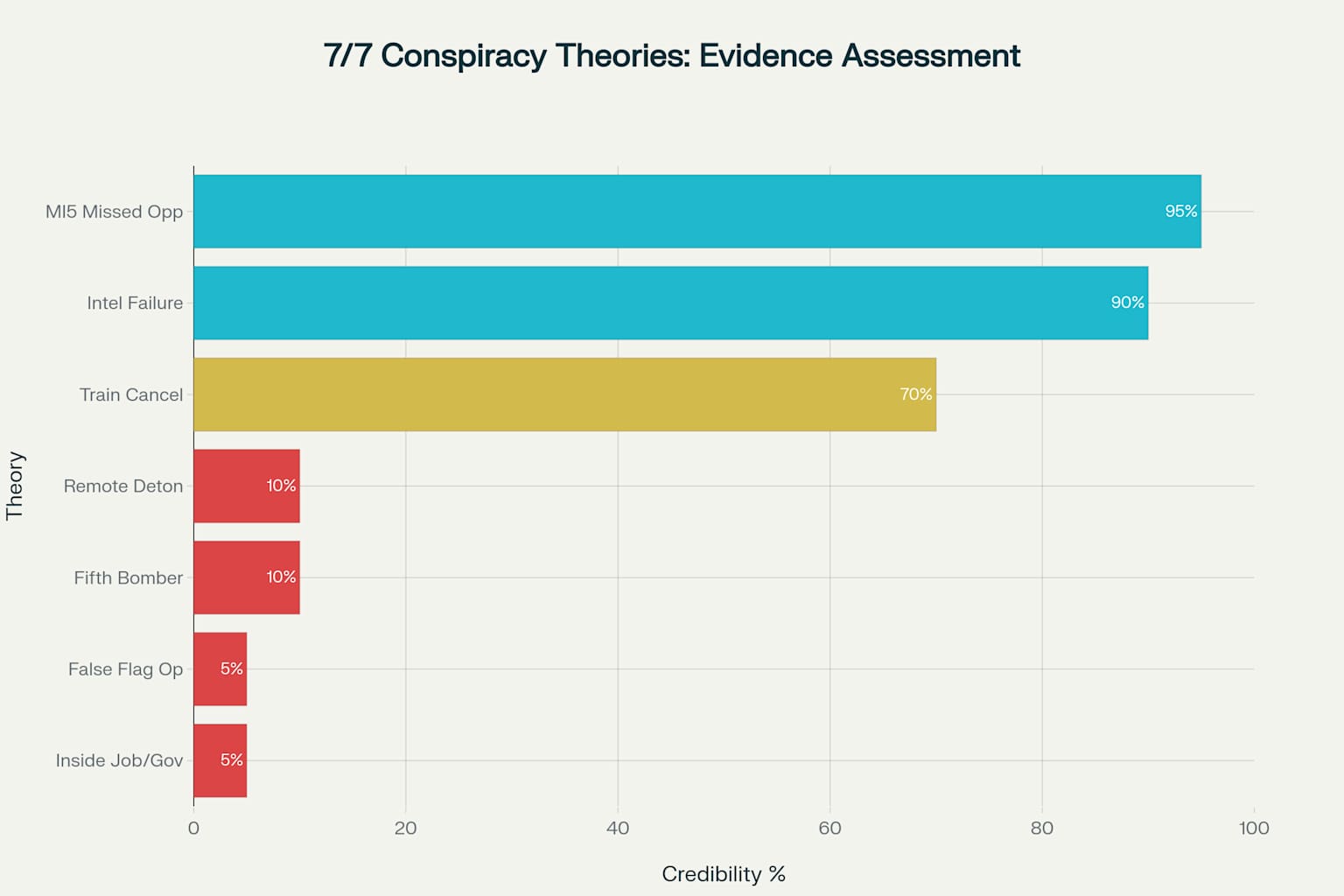
Evidence-based assessment of various conspiracy theories surrounding the 7/7 London bombings
Debunked Theories
Government Involvement/Inside Job: Some conspiracy theorists claimed the British government orchestrated the attacks to justify increased surveillance powers and military involvement in Iraq and Afghanistan. This theory lacks any credible evidence and is contradicted by extensive forensic evidence, witness testimony, and the bombers’ own video statements.
False Flag Operation: Related claims suggested the attacks were staged to blame Muslims for crimes they didn’t commit. These allegations are entirely unsupported by evidence and ignore the overwhelming proof of the bombers’ guilt, including DNA evidence at the bomb sites and their own martyrdom videos.
Fifth Bomber Theory: Early reports suggested a fifth bomber was involved, leading to persistent conspiracy theories. However, thorough investigation revealed this was based on misidentified CCTV footage of an innocent commuter who was quickly eliminated from inquiries.
Remote Detonation Claims: Some theorists argued the bombs were detonated remotely rather than by suicide bombers. Forensic evidence conclusively demonstrates the bombs were detonated by the carriers themselves, with DNA evidence placing each bomber at their respective bomb sites.
Partially Valid Concerns
Train Cancellation Error: The government initially claimed the bombers caught a train from Luton that had actually been cancelled that morning. This error, for which the government later apologized, fueled conspiracy theories but was simply an administrative mistake. The bombers actually caught an earlier train that was delayed.
Legitimate Failures
Intelligence Oversight Claims: The most credible “conspiracy theory” concerns the extent of intelligence failures. Official reports confirmed that MI5 and police missed twelve clear opportunities to identify and stop the bombers, lending credibility to claims of systemic failures in the security apparatus.
Motivations and Radicalization: The Path to Extremism
Ideological Drivers
The bombers’ motivations were complex but centered on a profound sense of grievance against Western foreign policy, particularly in Iraq and Afghanistan. Khan’s video statement, released posthumously, articulated the group’s worldview: “Your democratically elected governments continually perpetrate atrocities against my people all over the world. Your support makes you directly responsible.”
This perceived injustice was filtered through a twisted interpretation of Islamic doctrine that portrayed suicide bombing as religious martyrdom. The bombers saw themselves as soldiers in a global war between Islam and the West, viewing innocent civilians as legitimate targets due to their democratic participation in governments conducting military operations in Muslim countries.
The Radicalization Process
The transformation from ordinary citizens to suicide bombers occurred through a combination of personal vulnerability, ideological indoctrination, and group dynamics. Key factors included:
Personal Grievances: Each bomber experienced personal challenges that made them receptive to extremist messaging. Khan felt marginalized despite his education and professional success. Lindsay struggled with abandonment issues after his mother moved to America. Hussain was academically unsuccessful and socially isolated.
Ideological Exposure: The Beeston network provided access to extremist literature, videos, and online content that presented a Manichean worldview of Muslim victimhood and Western aggression. This material was consumed in group settings that reinforced extremist interpretations.
Social Bonding: The group’s outdoor activities and shared experiences created strong emotional bonds that made it difficult for individuals to abandon the group even as it moved toward violence. This social pressure was crucial in maintaining commitment to the bombing plot.
Religious Justification: Extremist religious instruction provided theological justification for mass murder, portraying suicide bombing as the ultimate expression of faith and a guarantee of paradise. This religious framework was essential in overcoming normal moral inhibitions against killing innocents.
Warning Signs Missed
Retrospective analysis revealed several warning signs that were either missed or not properly assessed:
- Khan’s deteriorating work performance and unexplained absences
- Hussain’s open support for Al-Qaeda and the 9/11 attacks
- Multiple trips to Pakistan by Khan and Tanweer for alleged religious instruction
- Increasing religious orthodoxy and social isolation
- Involvement in extremist discussion groups and access to radical literature
Future Risk Assessment: Could 7/7 Happen Again?
Current Threat Landscape
Twenty years after 7/7, the terrorist threat to the United Kingdom remains substantial, with several key developments affecting the likelihood of similar attacks occurring.
7_7_current_threat_assessment.csv
Generated File
Islamist Terrorism: This continues to represent the primary terrorist threat to the UK, accounting for approximately 75% of MI5’s counterterrorism caseload. However, the threat has evolved significantly since 2005, with self-initiated terrorists and small cells now posing the greatest danger rather than large, coordinated networks.
Online Radicalization: The internet has fundamentally transformed the radicalization process, enabling faster indoctrination and providing access to bomb-making instructions. Vulnerable individuals can now be radicalized entirely online without requiring physical contact with extremist networks, making detection significantly more challenging.
Lone Wolf Attacks: The predominant threat now comes from lone actors inspired by terrorist groups rather than directed by them. These individuals are much harder to detect through traditional intelligence gathering, as they may have no contact with known terrorist networks until they actually commit their attacks.
Factors Increasing Risk
Youth Radicalization: Intelligence agencies report growing concern about radicalization among increasingly young people, with some individuals coming to attention as early as age 13. Social media and online gaming platforms provide new vectors for extremist recruitment and indoctrination.
Rapid Radicalization: The time between initial exposure to extremist content and actual attack execution has shortened dramatically, from an average of 16 months in 2002 to just 12 weeks by 2020. This compression of the radicalization timeline makes intervention more difficult.
Geopolitical Instability: Ongoing conflicts in the Middle East, particularly the Israel-Palestine conflict, continue to provide emotional triggers for radicalization. Recent events have been linked to increased terrorist activity and plotting in Western countries.
Technological Evolution: Advances in technology make bomb-making instructions more accessible while encryption technologies make terrorist communications harder to intercept. The democratization of destructive knowledge increases the potential for successful attacks.
Factors Decreasing Risk
Enhanced Security Measures: Significant improvements in counterterrorism capabilities since 2005 include better intelligence sharing, more sophisticated surveillance technologies, and improved threat assessment processes. The CONTEST strategy has evolved to address many of the failures identified after 7/7.
Community Engagement: The Prevent program, despite criticism, has increased awareness of radicalization signs among communities, educators, and public sector workers. This has led to earlier intervention in many cases of concerning behavior.
Disrupted Networks: Sustained counterterrorism pressure has degraded the operational capabilities of major terrorist organizations, making directed attacks more difficult to organize and execute.
International Cooperation: Enhanced international intelligence sharing and counterterrorism cooperation has made it harder for terrorists to operate across borders and access training and resources.
Likelihood Assessment
Based on current threat indicators and historical patterns, a 7/7-style coordinated attack involving multiple suicide bombers remains possible but less likely than in 2005. Several factors support this assessment:
Operational Complexity: Coordinating multiple simultaneous attacks requires extensive planning, resources, and communication that increases the chances of detection by security services.
Network Requirements: Large-scale coordinated attacks typically require terrorist networks that are now under intense surveillance and pressure from security services.
Preferred Tactics: Current terrorist groups appear to favor simpler attack methods using vehicles, knives, or small-scale explosives that require less coordination and planning.
However, the risk of smaller-scale attacks by lone actors or small cells remains high and may actually be increasing due to the factors outlined above. These attacks, while potentially less deadly than 7/7, could still cause significant casualties and psychological impact.
Emergency response vehicles and personnel on a London street in the aftermath of a major incident
Systemic Changes and Lessons Learned
Legislative Response
The 7/7 attacks prompted significant changes to British counterterrorism legislation and procedures. The Terrorism Act 2006 extended pre-charge detention periods and created new offenses related to the glorification of terrorism. These measures, while controversial, were deemed necessary to address the evolving terrorist threat.
Intelligence Reform
Major reforms to intelligence sharing and coordination were implemented following the attacks. The creation of the Joint Terrorism Analysis Centre (JTAC) improved threat assessment, while enhanced information sharing protocols reduced the likelihood of critical intelligence falling through bureaucratic cracks.
Community Relations
The attacks had profound implications for Muslim communities in Britain, leading to increased scrutiny and surveillance but also efforts to build stronger partnerships between communities and security services. The Prevent program, despite ongoing criticism, represents an attempt to identify and intervene in radicalization processes before they lead to violence.
Transport Security
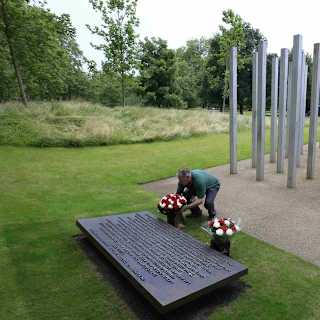
Comprehensive reviews of transport security led to improved CCTV coverage, enhanced passenger screening procedures, and better coordination between transport operators and security services. However, the open nature of public transport systems means they remain inherently vulnerable to determined attackers.

A man places a floral wreath at the 7/7 London Bombings Memorial in Hyde Park, commemorating the victims of the attacks
Remembrance and Legacy
The 7/7 attacks left an indelible mark on British society, fundamentally changing how the nation understands the terrorist threat and its own vulnerability. The memorial in Hyde Park, with its 52 stainless steel pillars representing each victim, serves as a permanent reminder of the lives lost and the ongoing need for vigilance against extremism.
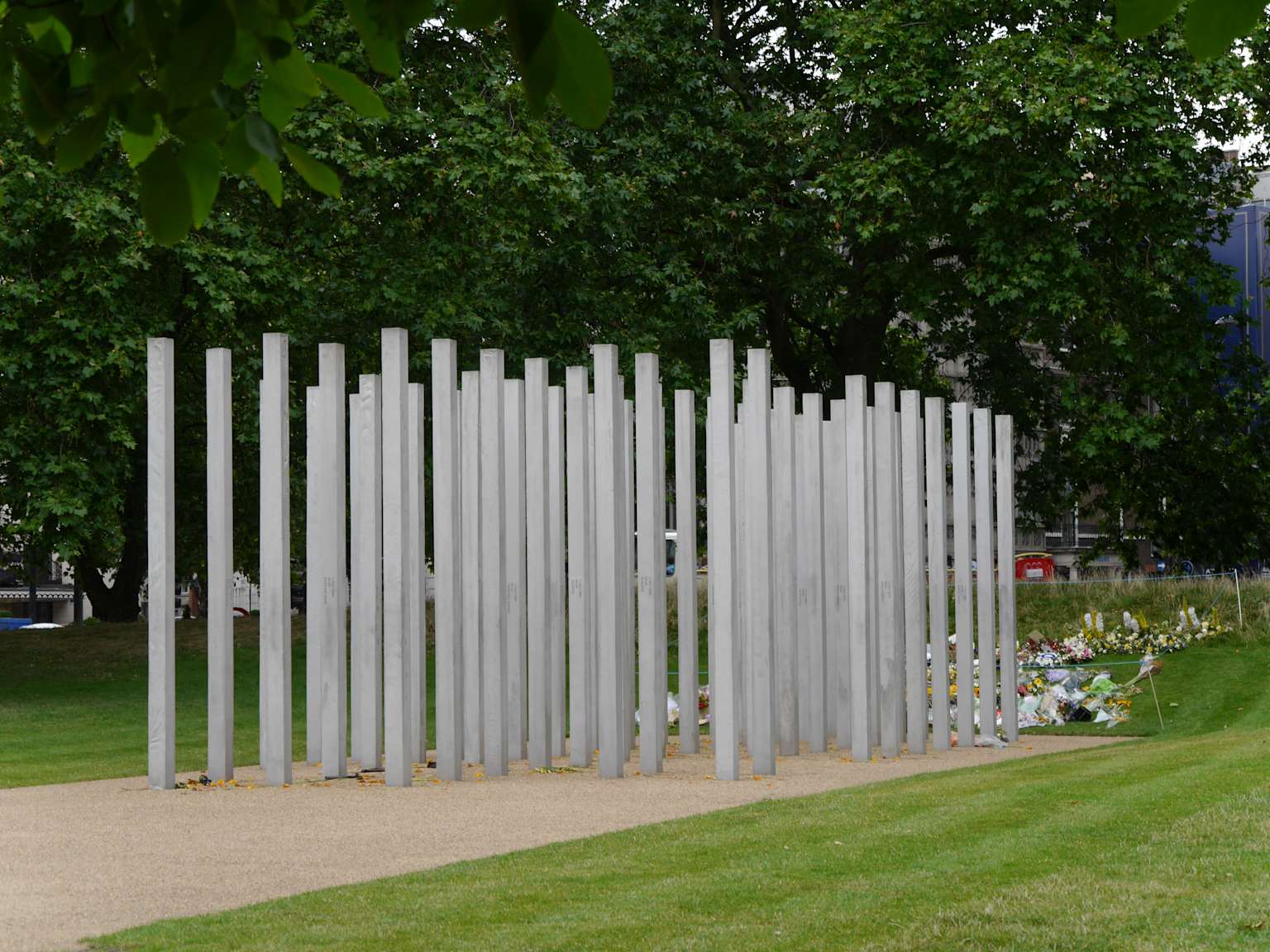
The 7/7 London Bombings Memorial in Hyde Park, with floral tributes at its base, commemorating the victims of the 2005 attacks
The legacy of 7/7 extends beyond security measures to encompass broader questions about social cohesion, integration, and the relationship between religious communities and the state. The attacks demonstrated that terrorism could emerge from within British society itself, challenging assumptions about who poses a threat and how that threat can be identified and countered.
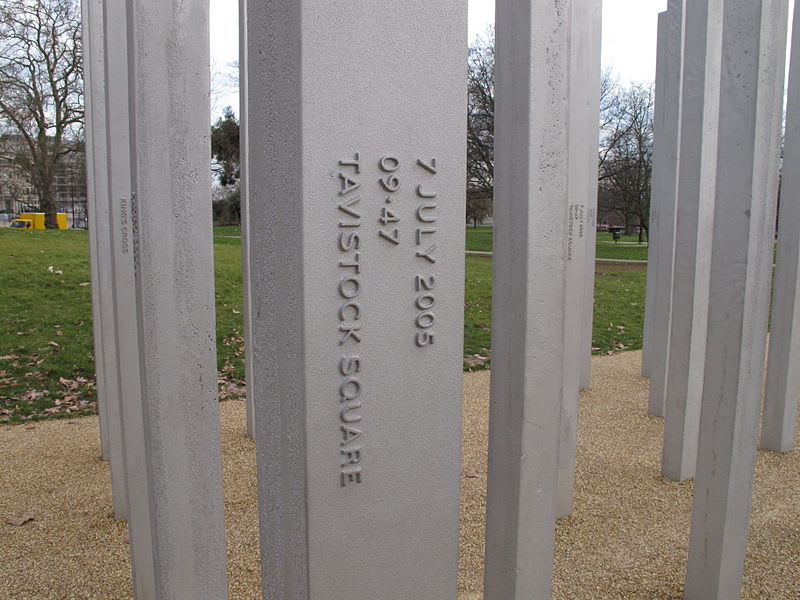
The 7/7 Memorial in Hyde Park, London, commemorating the victims of the 2005 bombings
Conclusions
The 7/7 London bombings represented a watershed moment in British counterterrorism, demonstrating the deadly potential of homegrown Islamic extremism and exposing critical failures in the intelligence and security apparatus. The attacks succeeded not because they were particularly sophisticated, but because of systemic failures in threat assessment, intelligence sharing, and communication that allowed four determined killers to slip through multiple security nets.
The conspiracy theories that emerged in the attacks’ aftermath reveal the deep suspicion and mistrust that such events can generate, particularly within affected communities. While the vast majority of these theories lack credible evidence, they highlight the importance of transparency and accountability in official investigations of terrorist attacks.
Looking forward, the risk of a repeat of 7/7 remains real but has evolved significantly. While large-scale coordinated attacks may be less likely due to enhanced security measures and international pressure on terrorist networks, the threat from lone actors and small cells has arguably increased. The acceleration of online radicalization, the increasing youth of those being recruited to extremism, and ongoing geopolitical instability all contribute to a persistent and evolving threat landscape.
The question of whether 7/7 could happen again cannot be answered with certainty, but the evidence suggests that while security improvements have reduced the likelihood of identical attacks, the fundamental conditions that enabled the 2005 bombings – social alienation, ideological extremism, and systematic intelligence failures – remain present in British society. Only through continued vigilance, improved community relations, and sustained investment in counterterrorism capabilities can the risk be minimized.
The victims of 7/7 deserve to be remembered not just as statistics in the global war on terror, but as individuals whose lives were cut short by an ideology that values political goals above human dignity. Their memory serves as a powerful reminder of why the fight against terrorism must continue, and why vigilance against extremism in all its forms remains essential to protecting democratic society from those who would destroy it through violence and terror.
The lesson of 7/7 is clear: terrorism can emerge from the most unexpected quarters, but it can also be prevented through effective intelligence work, community engagement, and international cooperation. The challenge for British society is to maintain these defenses while preserving the open, democratic values that make the country worth defending in the first place.

